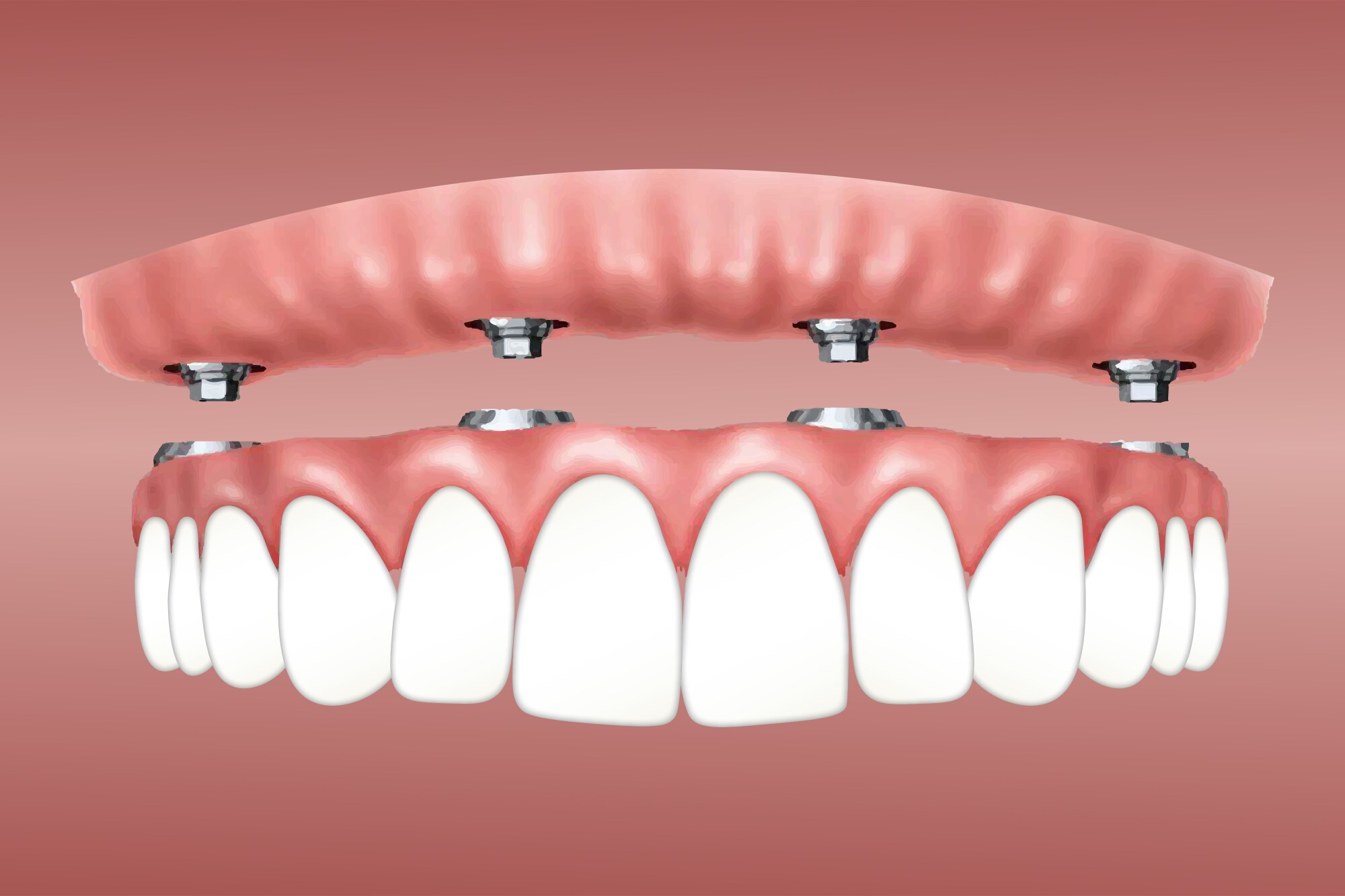The Ultimate Guide To Dental Sense
The Ultimate Guide To Dental Sense
Blog Article
Dental Sense - An Overview
Table of ContentsThe Dental Sense StatementsA Biased View of Dental SenseDental Sense Can Be Fun For AnyoneThe smart Trick of Dental Sense That Nobody is Talking About
are clinical gadgets operatively implanted right into the jaw to bring back an individual's capability to chew or their look. They supply support for man-made (fake) teeth, such as crowns, bridges, or dentures. When a tooth is shed as a result of injury or illness, an individual can experience problems such as rapid bone loss, malfunctioning speech, or adjustments to chewing patterns that cause discomfort.Dental dental implant systems are composed of a dental implant body and dental implant joint and might also consist of a joint fixation screw. Dental implants. The oral implant body is surgically put in the jawbone instead of the tooth's origin. The oral implant abutment is normally attached to the dental implant body by the joint addiction screw and expands through gums into the mouth to sustain the attached artificial teeth
(https://forums.hostsearch.com/member.php?274218-dentalsense1)Structure of The Dental Implant System choosing oral implants, speak to your dental supplier regarding the prospective advantages and dangers, and whether you are a candidate for the procedure. Points to take into consideration: Your total health and wellness is a crucial consider figuring out whether you are a great candidate for dental implants, the length of time it will certainly take to heal, and for how long the dental implant might remain in location.
Smoking may influence the recovery procedure and lower the long-term success of the implant. The healing procedure for the implant body might take several months or longer, during which time you typically have a short-term joint instead of the tooth. the oral implant treatment: Carefully follow the dental hygiene guidelines offered to you by your oral copyright.
The Best Guide To Dental Sense
Implant failure can cause the need for another surgical treatment to deal with or replace the implant system. Brings back the capacity to eat Recovers cosmetic appearance Aids keep the jawbone from diminishing as a result of bone loss Preserves the health and wellness of the bordering bone and periodontals Aids maintain adjacent (neighboring) teeth stable Improves high quality of life Damages to surrounding all-natural teeth during dental implant positioning Injury to the surrounding cells during surgical procedure, such as sinus opening Injury throughout surgical procedure (as an example, fracture of surrounding jawbone) Poor feature, such as seeming like the teeth do not attack with each other usually A feeling that the tooth is loosened or turning in area resulting from an abutment screw loosening up Implant body failure (looseness of the implant body) as a result of systemic infection, which might be most likely in individuals with unrestrained diabetes mellitus as a result of neighborhood infection in bone and gum tissues sustaining the implant body as a result of postponed healing, which may be more probable in patients who smoke Problem cleansing the periodontals around the implant, resulting in poor dental health Unattended gum illness Post-surgical numbness as a result of nerve impingement or damages Constantly alert healthcare service providers and imaging specialists that you have dental implants before any type of magnetic resonance imaging (MRI) or x-ray procedures.
FDA is not familiar with any unfavorable occasions reported for MRI or x-ray treatments with oral implants. Oral implants systems are generally made of products that adhere to international consensus criteria of the International Company for Standardization (ISO) or ASTM International. These requirements have information of what makes a risk-free product.

A dental implant is a structure that replaces a missing out on tooth. With screw-like tools, the cosmetic surgeon inserts an implant into the jawbone, and it acts as an anchor for a man-made tooth, called a crown.
The Basic Principles Of Dental Sense
Some people are not eligible for oral implant surgical treatment. It is for oral specialists to run on people with: intense illnessuncontrollable metabolic diseasebone or soft cells condition or infectionIf these problems are resolved, an individual can have the surgical procedure. In, oral surgeons avoid operating on individuals with: If individuals with any one of the above go through oral implant surgical treatment, there is a higher risk of the dental implant stopping working.

Oral dental implant surgery is a tailored procedure. It's not the same for everybody. The following gives a general summary of what you can expect your dental practitioner, dental doctor, periodontist or prosthodontist to do: Position the implant operatively. Give you time to recover. Affix the post and final crown, bridge or denture.
Next off, your specialist will thoroughly place the oral implant into your jaw. If your implant is near the front of your mouth, your dental practitioner will certainly make a temporary tooth for you to put on till you heal.
Dental Sense Can Be Fun For Everyone
Your copyright can inform you what to expect in your scenario. During the recovery phase, your jawbone should fuse to the dental implant. This procedure, called osseointegration, is essential for stability and lasting success. This procedure can take anywhere from three to 9 months. Sometimes, it may take much longer.
When your dental implant heals, your dentist can connect the joint (small port blog post) and your last repair (crown, bridge or denture). This usually takes regarding one hour to finish and might call for a 2nd minor surgical treatment. You should not feel any pain throughout your oral implant procedure because your provider will use medication to numb your gums.
Report this page